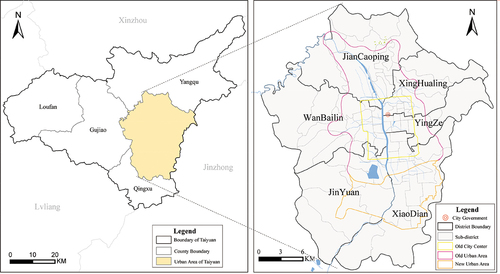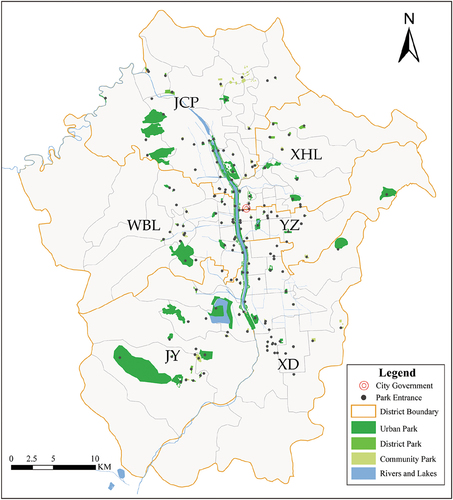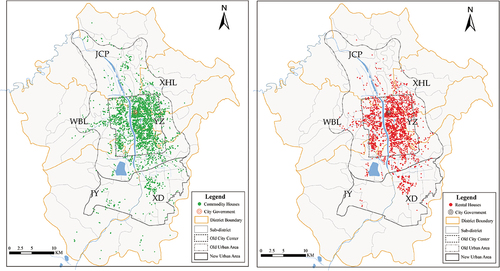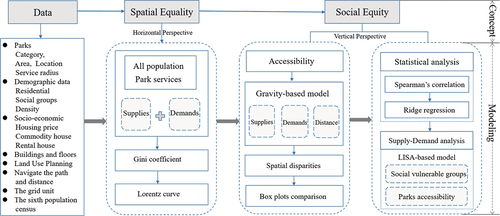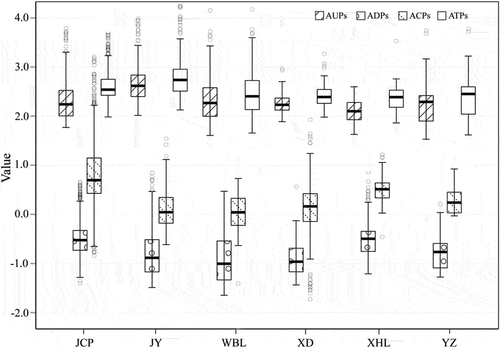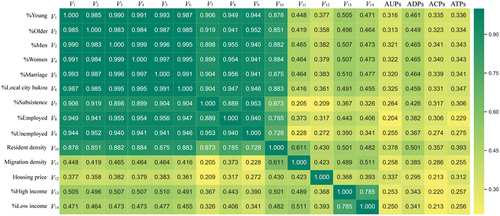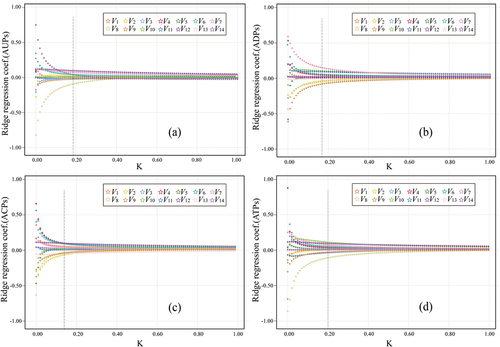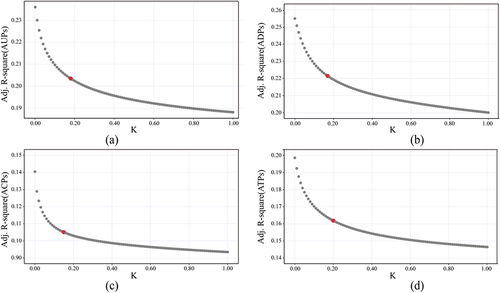Figures & data
Table 1. The classification of 337 cities in China.
Table 2. Relevant definitions for special terms in this study.
Table 3. Relevant descriptions of parks in Taiyuan.
Table 4. Descriptive statistics of parks in Taiyuan’s districts in 2018.
Table 5. Descriptive statistics at the grid scale.
Figure 4. Population estimation in the study area: (a) Database creation, (b) Building exhibition, and (c) Population distribution in space.
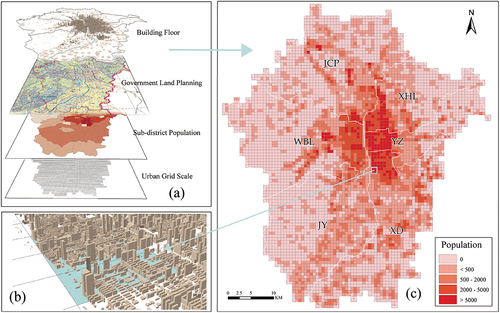
Table 6. The correlation coefficient between different types of population distribution and WorldPop2018.
Figure 5. Linear relationship between population distribution based on the sixth census and the WorldPop2018 in Taiyuan.

Figure 8. Spatial accessibility to different types of parks in Taiyuan (Quantile classification is used to divide the accessibility results into five categories): (a) is the accessibility to UPs (AUPs), (b) is the accessibility to DPs (ADPs), (c) is the accessibility to CPs (ACPs), and (d) is the total accessibility of parks (ATPs) in a certain area (the sum of the accessibility of three types of parks).
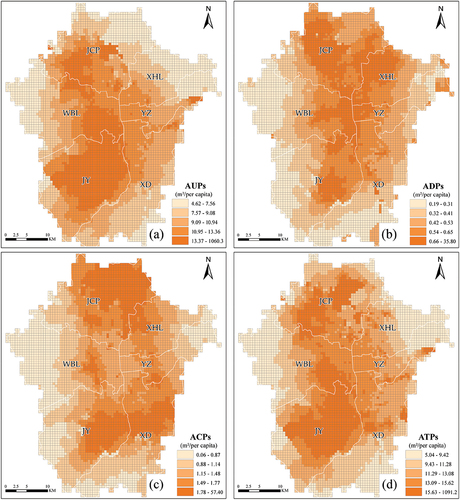
Table 7. Ridge regression results.
Figure 14. Bivariate LISA map of parks accessibility and statistically disadvantaged variables in Taiyuan (V2: %old; V5: %marriage; V8: %employed; V9: %unemployed; V11: Migration density).
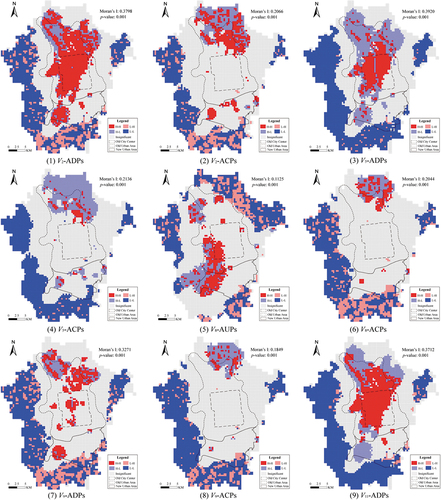
Data availability statement
The data that support the findings of this study were derived from the National Bureau of Statistics at http://www.stats.gov.cn, the Taiyuan municipal government website at http://ylj.taiyuan.gov.cn/and other resources available in the public domain. Derived data are available from the corresponding author.

